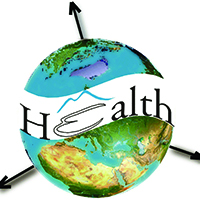Investigating spatiotemporal patterns of the COVID-19 in São Paulo State, Brazil

All claims expressed in this article are solely those of the authors and do not necessarily represent those of their affiliated organizations, or those of the publisher, the editors and the reviewers. Any product that may be evaluated in this article or claim that may be made by its manufacturer is not guaranteed or endorsed by the publisher.
Authors
As of 16 May 2020, the number of confirmed cases and deaths in Brazil due to COVID-19 hit 233,142 and 15,633, respectively, making the country one of the most affected by the pandemic. The State of São Paulo (SSP) hosts the largest number of confirmed cases in Brazil, with over 60,000 cases to date. Here we investigate the spatial distribution and spreading patterns of COVID-19 in the SSP by mapping the spatial autocorrelation and the clustering patterns of the virus in relation to the population density and the number of hospital beds. Clustering analysis indicated that São Paulo City is a significant hotspot for both the confirmed cases and deaths, whereas other cities across the state were less affected. Bivariate Moran's I showed a low relationship between the number of deaths and population density, whereas the number of hospital beds was less related, implying that the fatality depends substantially on the actual patients' conditions. Multivariate Local Geary showed a positive relationship between the number of deaths and population density, with two cities near São Paulo City being negatively related; the relationship between the number of deaths and hospital beds availability in the São Paulo Metropolitan Area was basically positive. Social isolation measures throughout the State of São Paulo have been gradually increasing since early March, an action that helped to slow down the emergence of the new confirmed cases, highlighting the importance of the safe-distancing measures in mitigating the local transmission within and between cities in the state.
How to Cite

This work is licensed under a Creative Commons Attribution-NonCommercial 4.0 International License.
PAGEPress has chosen to apply the Creative Commons Attribution NonCommercial 4.0 International License (CC BY-NC 4.0) to all manuscripts to be published.













